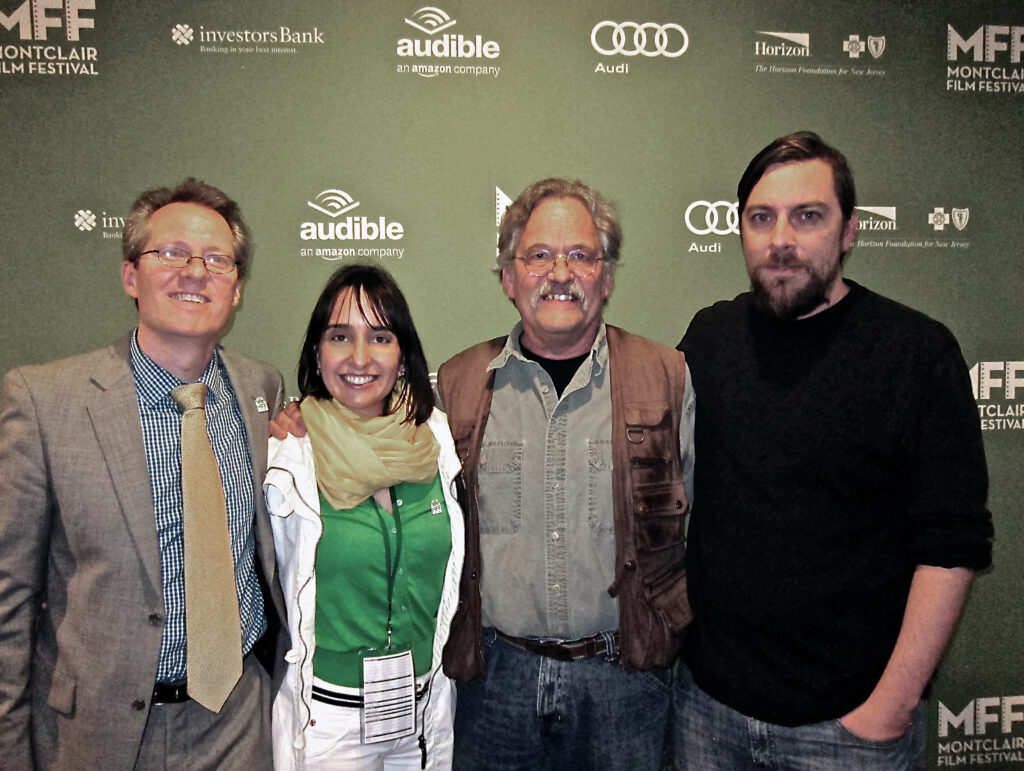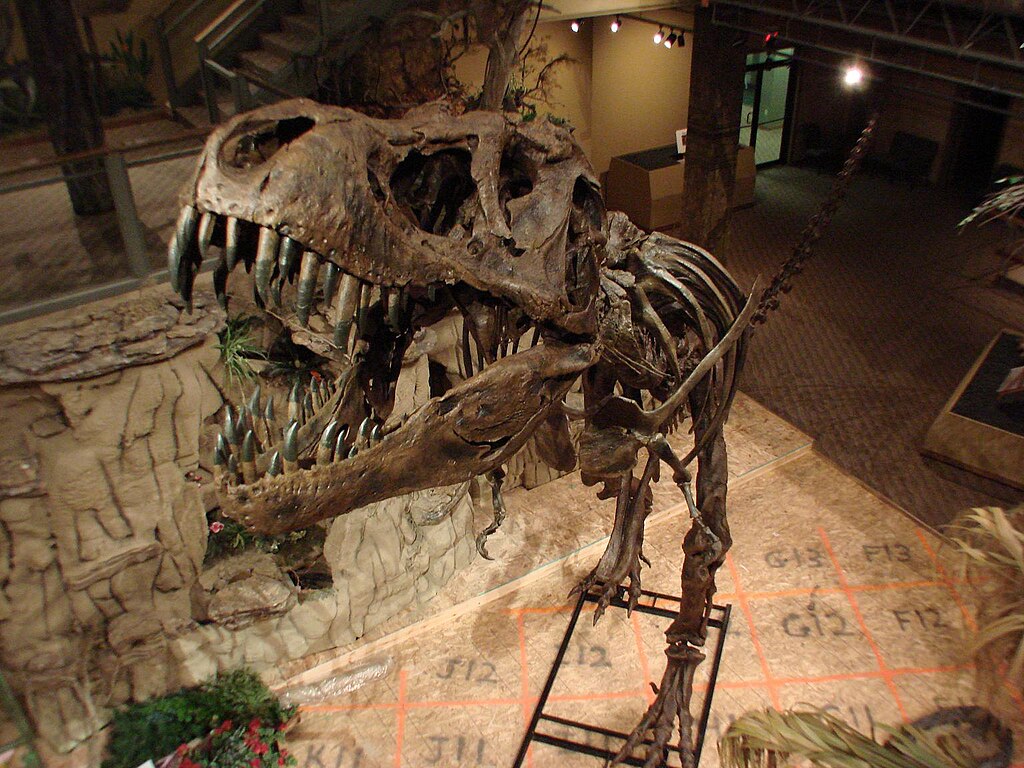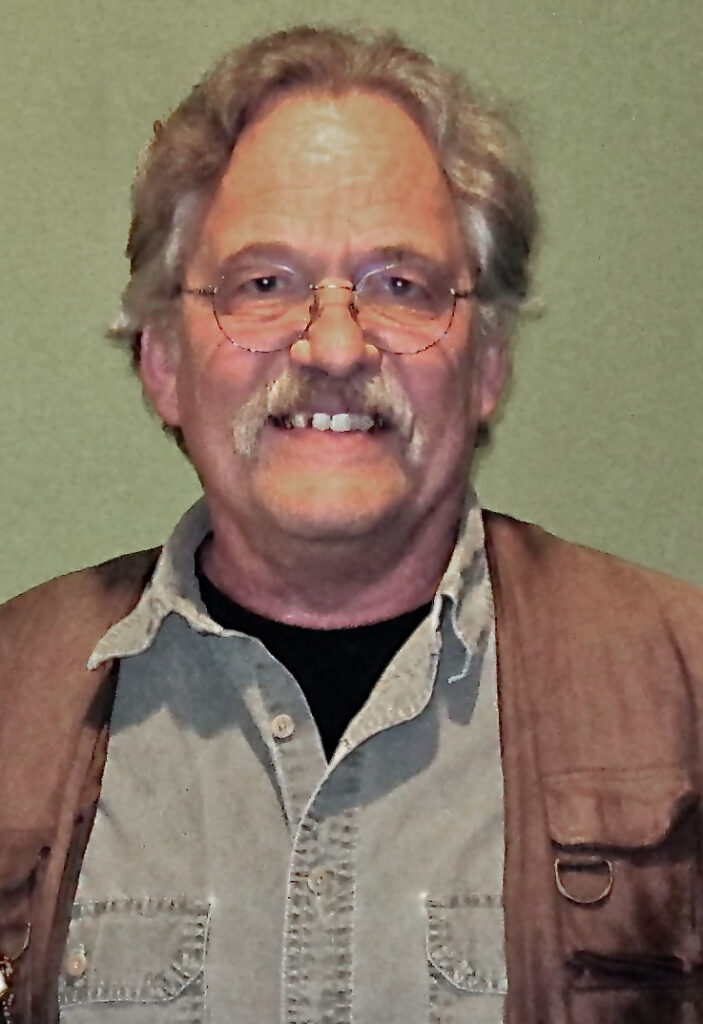In the summer of 1990, a discovery in the badlands of South Dakota would ignite one of the most contentious legal battles in paleontological history. The unearthing of “Sue,” the largest and most complete Tyrannosaurus rex skeleton ever found, marked the beginning of a decade-long saga that would forever change the landscape of fossil collection in America. At the center of this controversy stood Dr. Peter Larson, a passionate paleontologist whose life would become inextricably linked with the magnificent prehistoric predator. Their story traverses the realms of science, law, property rights, and cultural heritage, revealing the complex intersection where dinosaur bones meet human ambition.
The Discovery That Shook Paleontology

On August 12, 1990, Sue Hendrickson, a field paleontologist working with the Black Hills Institute of Geological Research, made a momentous discovery while exploring the Cheyenne River Indian Reservation in western South Dakota. While the rest of her team repaired a flat tire, Hendrickson investigated a nearby cliff face where she spotted several large bone fragments weathering out of the hillside. What followed was the revelation of a lifetime—the exposed remains of what would prove to be the most complete T. rex skeleton ever discovered, with over 90% of its bones intact. Dr. Peter Larson, president of the Black Hills Institute, immediately recognized the significance of the find and named the specimen “Sue” after its discoverer. The team paid landowner Maurice Williams $5,000 for the right to excavate, a transaction that seemed straightforward at the time but would later become the focal point of an unprecedented legal battle.
Peter Larson: The Man Behind the Discovery

Dr. Peter Larson’s journey to becoming a central figure in paleontological history began long before Sue’s discovery. Born in 1952 and raised in South Dakota, Larson demonstrated an early fascination with fossils that would shape his life’s trajectory. He co-founded the Black Hills Institute of Geological Research in Hill City, South Dakota, in 1974, establishing it as a commercial fossil company that walked the line between academic research and the fossil trade. Despite lacking a formal doctorate, Larson earned respect in paleontological circles for his expertise, meticulous field methods, and significant contributions to dinosaur research. His passion for discovery was matched by his belief that fossils should be accessible to the public rather than confined to academic institutions. This philosophy would later put him at odds with government agencies and some academic paleontologists who viewed commercial fossil collection with skepticism or outright disdain.
Excavating a Prehistoric Giant

The excavation of Sue became an immediate priority for Larson and his team at the Black Hills Institute. Over seventeen days, they meticulously extracted the massive skeleton from its 65-million-year-old tomb, employing techniques that preserved the specimen’s scientific integrity. Each bone was carefully documented, mapped, and jacketed in protective plaster before being transported to the Institute’s facility in Hill City. The excavation yielded an astonishing 250 bones of the approximately 350 in a complete T. rex skeleton, making Sue the most complete specimen of its kind. Beyond mere completeness, Sue’s remains revealed unprecedented details about T. rex anatomy, including previously unknown bones and pathologies that would provide valuable insights into the life of this prehistoric apex predator. The specimen’s skull alone weighed 600 pounds and contained teeth up to 12 inches long, offering a vivid glimpse into the formidable hunting capabilities of this Cretaceous carnivore.
The FBI Raid That Stunned the Scientific Community

On May 14, 1992, the small town of Hill City, South Dakota, witnessed an unprecedented scene that sent shockwaves through the paleontological community. Without warning, the Federal Bureau of Investigation, accompanied by National Guard troops and other federal agents, descended upon the Black Hills Institute in a dramatic raid. The target: Sue’s remains and any related documentation. Acting on a warrant that alleged potential violations of antiquities laws, the authorities seized the T. rex bones that Larson and his team had spent two years carefully preparing and studying. The raid was conducted with military precision—agents cordoned off the area, restricted access to the building, and methodically collected and removed the fossil material. For Larson and his colleagues, the sight of their scientific treasure being packed into crates and hauled away in government vehicles was devastating. This heavy-handed approach raised serious questions about the government’s motives and methods, becoming a flashpoint in debates about fossil ownership and scientific freedom.
Legal Complexities: Land, Tribes, and Federal Authority

The seizure of Sue unveiled a tangled web of legal questions that would take years to unravel. At the core of the dispute was the status of the land where Sue was discovered. Maurice Williams, the rancher who had received $5,000 for the fossil, held his land in trust through the Bureau of Indian Affairs—a critical detail that complicated ownership claims. The Cheyenne River Sioux Tribe asserted that as the land was within reservation boundaries, the fossil belonged to the tribe regardless of individual land ownership arrangements. Meanwhile, the federal government maintained that fossils found on trust lands fell under their jurisdiction as trustees. This three-way contest highlighted the complex intersection of Native American sovereignty, federal trust responsibilities, and private property rights. The case raised fundamental questions: Could fossils be considered real estate? Who owns the natural heritage buried beneath American soil? These questions transcended Sue’s specific situation and threatened to reshape the entire field of paleontological collection in the United States.
The Indictment: Charges Beyond the Dinosaur

In 1993, the legal battle took an unexpected and alarming turn when federal prosecutors indicted Peter Larson and several Black Hills Institute associates on 153 counts of fossil-related crimes. Remarkably, none of these charges directly concerned Sue—instead, they encompassed allegations of customs violations, theft from federal lands, money laundering, and conspiracy related to other fossil specimens collected over the years. This sweeping indictment appeared to many observers as a calculated attempt to punish Larson and establish federal control over the fossil trade. The prosecution assembled a case that portrayed the Black Hills Institute as engaged in systematic illegal trafficking of fossils from federal and tribal lands. For Larson, who had built his career on what he considered legitimate fossil collection, the charges represented not just a legal threat but an existential one to his livelihood and reputation. The indictment’s timing and scope suggested to many that Sue had become a catalyst for a broader government crackdown on commercial paleontology.
The Trial of the Century in Paleontology

The trial of Peter Larson and his associates began in early 1995 and quickly earned the nickname “the dinosaur trial of the century.” Over seven weeks, the federal courthouse in Rapid City, South Dakota, became the battleground where the future of commercial paleontology would be decided. The prosecution presented extensive evidence of alleged fossil trafficking, while the defense argued that Larson’s activities fell within accepted industry practices and ambiguous regulatory frameworks. The trial exposed the gray areas that had long existed in fossil collection, where unclear regulations and inconsistent enforcement had created an environment of uncertainty. Notably, the scientific community found itself divided—some paleontologists testified for the prosecution, arguing that commercial collection threatened scientific research, while others defended Larson’s contributions to paleontological knowledge. After lengthy deliberations, the jury acquitted Larson and his colleagues of most charges, including all allegations of fossil theft from federal lands. However, Larson was convicted of two felony counts related to failure to declare currency when traveling internationally and two minor customs violations.
Imprisonment and Its Aftermath

Despite the jury’s acquittal on most serious charges, Judge Richard Battey sentenced Peter Larson to two years in federal prison—a punishment many viewed as disproportionately harsh for the customs violations of which he was convicted. On February 5, 1996, Larson began serving his sentence at a minimum-security facility in Colorado, forced to exchange his life of dinosaur hunting for confinement. During his imprisonment, Larson maintained his scientific pursuits to the extent possible, corresponding with colleagues and even conducting paleontological research from behind bars. The paleontological community rallied around him, with many prominent scientists publicly criticizing the severity of his sentence. Upon his release in 1998, Larson returned to the Black Hills Institute, determined to rebuild both the organization and his career. His imprisonment became a cautionary tale in scientific circles about the risks faced by those operating at the intersection of commercial enterprise and scientific discovery, particularly when dealing with antiquities and natural history specimens.
The Landmark Supreme Court Decision

While Larson served his prison sentence, Sue’s fate continued through a separate legal process that would ultimately reach the United States Supreme Court. The core question—who owned Sue?—remained unresolved despite the criminal proceedings against Larson. In 1992, a federal court had ruled that Sue belonged to Maurice Williams as the landowner, not to the Black Hills Institute, effectively invalidating the $5,000 payment as insufficient for transferring ownership of the fossil. This ruling was subsequently appealed to the Supreme Court. In a decision that would permanently alter the landscape of American paleontology, the Supreme Court declined to hear the case in 1994, letting the lower court’s ruling stand. This established the precedent that fossils should be treated as part of the land, belonging to the landowner rather than to the discoverer or excavator. The ruling represented a seismic shift for commercial fossil hunters, who had traditionally operated on handshake agreements and nominal payments. More broadly, it forced a reconsideration of how America’s paleontological heritage should be managed and who had a rightful claim to the remnants of prehistoric life.
The Historic Auction at Sotheby’s

Following the Supreme Court decision, Maurice Williams decided to sell Sue at public auction—a move that alarmed many in the scientific community who feared the specimen might be purchased by a private collector and lost to science. On October 4, 1997, Sue went on the auction block at Sotheby’s in New York in an unprecedented sale of a dinosaur fossil. The auction drew worldwide attention and attracted bidders ranging from museums to wealthy individuals. As the bidding quickly escalated, it became clear that Sue would command a record-breaking price. When the gavel finally fell, the winning bid of $8.36 million (equivalent to over $13 million today) had been placed by the Field Museum of Chicago, backed by corporate sponsors including McDonald’s and Disney. The astronomical sum—more than 1,600 times what Larson had originally paid—forever changed the economics of fossil collection, elevating dinosaur specimens from scientific curiosities to multi-million-dollar assets. For Larson, who attended the auction, watching Sue sold to the highest bidder represented both vindication of the specimen’s importance and the painful culmination of his loss.
Sue’s Scientific Impact and Legacy

Following the auction, Sue underwent an extensive preparation process at the Field Museum, with scientists meticulously cleaning and studying each bone before the skeleton went on public display in May 2000. The scientific value of the specimen has proven immeasurable, yielding insights that have revolutionized our understanding of Tyrannosaurus rex. Sue’s skeleton revealed evidence of numerous injuries and infections that the animal survived, including broken ribs, a damaged shoulder, and leg injuries, suggesting a remarkably resilient creature. The completeness of the specimen allowed researchers to make more accurate assessments of T. rex size, weight, and proportions than ever before. Sue’s skull contained surprising anatomical features, including a previously unknown bone called the epipterygoid, which added new dimensions to T. rex cranial anatomy. Perhaps most significantly, Sue has served as a reference specimen against which other T. rex discoveries are compared, effectively becoming the “gold standard” for this iconic species and playing a crucial role in untangling taxonomic questions about tyrannosaur evolution.
Peter Larson’s Continued Contributions

Despite the loss of Sue and his imprisonment, Peter Larson’s passion for paleontology remained undiminished. Upon his release, he returned to the Black Hills Institute and continued his work discovering, excavating, and preparing dinosaur fossils. In the decades following the Sue controversy, Larson has been involved in numerous significant finds, including “Stan,” another remarkably complete T. rex specimen that was discovered in 1992 and named after amateur paleontologist Stan Sacrison. Larson has authored or co-authored dozens of scientific papers on dinosaur anatomy, growth, and behavior, establishing himself as a respected voice in paleontological research despite his unconventional path. He has also become an advocate for clearer regulations governing fossil collection, working to establish ethical standards that balance scientific interests with landowner rights. Through public lectures, museum collaborations, and media appearances, Larson has used his unique perspective to educate the public about paleontology and the importance of preserving prehistoric remains for scientific study.
How Sue Transformed Paleontology Forever

The battle over Sue fundamentally altered the landscape of American paleontology in ways that continue to reverberate today. The legal precedent established by the case created a new framework for fossil ownership that emphasized landowner rights, leading to more formal agreements and higher payments for access to fossil-bearing properties. Academic institutions and museums were forced to adapt to a more competitive environment, developing new funding models and partnerships to acquire significant specimens in a market with dramatically inflated prices. The case also highlighted tensions between commercial collectors and academic paleontologists, sparking ongoing debates about who should have access to fossils and how best to balance scientific study with public engagement. On federal lands, regulatory frameworks were tightened, with clearer permitting processes established for fossil collection. Perhaps most importantly, Sue’s story brought paleontology into the public consciousness like never before, generating unprecedented interest in dinosaurs and their scientific significance. The dramatized legal battle, complete with FBI raids and courtroom drama, transformed fossil hunting from an obscure scientific pursuit into a compelling narrative that captured global imagination.
The Dinosaur Remains: Sue Today

Today, Sue stands as the centerpiece of the Field Museum’s dinosaur hall, where millions of visitors have marveled at the magnificent predator since its unveiling in 2000. In 2018, the museum undertook a comprehensive reinstallation of Sue, incorporating new scientific findings into a more anatomically accurate mount in a dedicated exhibition space. This update included properly positioning Sue’s gastralia (belly ribs) and adjusting the posture to reflect current understanding of tyrannosaur biomechanics. Beyond its physical presence in Chicago, Sue has become a global ambassador for paleontology through traveling exhibits, educational programs, and an active social media presence managed by the museum. The specimen continues to yield new scientific insights as researchers apply advanced technologies like CT scanning and bone histology to reveal aspects of T. rex biology previously hidden from view. Sue remains the most complete T. rex ever discovered, a status that has endured for over three decades despite numerous subsequent finds. For Peter Larson, who still visits “his” dinosaur when in Chicago, Sue represents both his greatest discovery and his greatest loss—a bittersweet legacy that exemplifies the complex relationship between those who unearth the past and the treasures they bring to light.
Conclusion: A Legacy Carved in Bone

The saga of Peter Larson and Sue the T. rex transcends the boundaries of a simple legal dispute to illuminate profound questions about science, ownership, and our collective prehistoric heritage. This fossil, entombed for 67 million years before emerging into human controversy, became the catalyst for transformative changes in how we approach the remnants of ancient life. For Larson, the journey brought both triumph and tragedy—scientific recognition alongside personal hardship. Yet through it all, his dedication to paleontology never wavered. The true legacy of this remarkable story lies not just in legal precedents or museum displays, but in how it broadened humanity’s connection to our planet’s distant past. Sue stands today not only as a magnificent scientific specimen but as a potent symbol of the passion, conflict, and wonder that drive our continuing exploration of Earth’s ancient history. In the end, this T. rex and the man who discovered her have both secured their places in the annals of science—their stories permanently intertwined and preserved, much like the bones that started it all.




